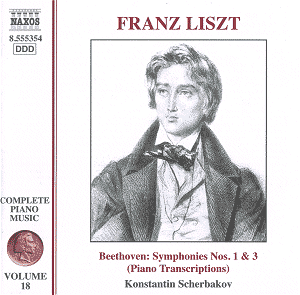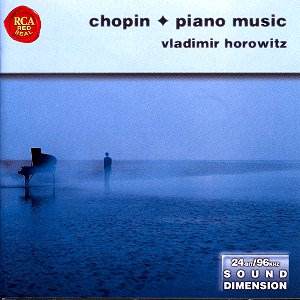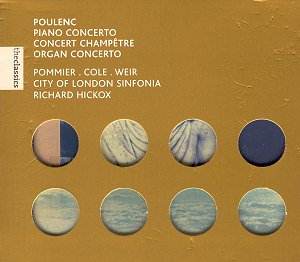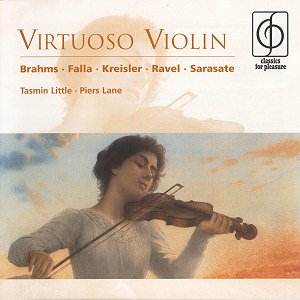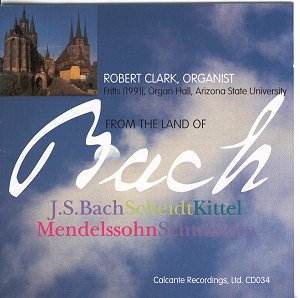 Composer: J. S. Bach (1685-1750), S. Scheidt (1587-1654), J. C. Kittel (1732-1809), R. Schumann (1810-1856), F. B. Mendelssohn (1809-1847)
Composer: J. S. Bach (1685-1750), S. Scheidt (1587-1654), J. C. Kittel (1732-1809), R. Schumann (1810-1856), F. B. Mendelssohn (1809-1847)
Works: Concerto in G Major after Johann Ernst BWV 592, Passamezzo SSWV 1071, Prelude in E-Flat Major, Prelude in E-Flat Minor, Prelude and Fugue in E Major BWV 566, Six Fugues on B-A-C-H, Op.60, Two Chorale Preludes, Sonata No. 3 in A Major
Performers: Robert Clark, Organ
Recording: Organ Hall, Arizona State University; Organ by Paul Fritts and Co., 1992; Recorded January 2000, Arizona State University, Temple, Arizona
Label: Calcante Recordings, CAL CD034
The latest offering from Calcante Recordings, “From the Land of Bach,” showcases a selection of organ works that traverse a remarkable temporal landscape, spanning from the Baroque to the Romantic. Robert Clark, a skilled organist, performs on a Paul Fritts instrument, whose design is rooted in the traditions of Arp Schnitger and the Hamburg school, making it particularly suited for the repertoire at hand. The album’s exploration of the legacy of Bach—integrating works by his contemporaries and successors—serves both as homage and as a demonstration of the enduring influence of his compositional style.
Clark’s interpretation of Bach’s music is commendable, especially in the Concerto in G Major BWV 592, where he navigates the intricate interplay between the solo and ripieno sections with clarity. The registration choices are historically informed; despite the absence of a swell box, Clark manages to achieve a commendable smoothness in the crescendi, particularly in Schumann’s Six Fugues on B-A-C-H, where the emotional depth is palpable. The Fritts organ’s mechanical action allows for articulate phrasing, accentuating Clark’s sprightly rhythms and tidy finger work, although some minor slips—most notably in Schumann’s Fugue No. 5—detract slightly from the overall polish.
The recording quality merits attention, as the acoustics of the Organ Hall are rendered with clarity and distinction. The spaciousness of the venue complements the organ’s individual tonal colors, enhancing the listening experience. Clark’s interpretations breathe life into Scheidt’s Passamezzo, a piece rich with variations that echo the influence of his teacher, Sweelinck. Here, Clark captures the dance-like spirit, yet there are moments—such as the trills in Variation 5—where precision falters, momentarily obscuring the piece’s buoyant character.
Mendelssohn’s Sonata No. 3 in A Major presents a mixed bag. While the second movement offers a serene calm that showcases Clark’s sensitivity, the first movement lacks the requisite weight and sense of arrival that one expects from a maestoso character. This contrast highlights the challenges of interpreting Mendelssohn’s relationship with Bach, a duality that Clark navigates with varying degrees of success. The overall sound engineering supports this endeavor, providing a vivid sonic picture that invites the listener into the nuances of each work.
The journey through two centuries of organ music on this disc, while not without its technical shortcomings, ultimately offers an engaging experience. Clark’s choices reflect a deep understanding of the music’s historical context and stylistic nuances, allowing the listener to appreciate how these works converse across time. The album stands as a testament to the organ’s rich heritage, and despite some imperfections, it ultimately delivers a rewarding exploration of the organ repertoire that will resonate with both enthusiasts and casual listeners alike.
